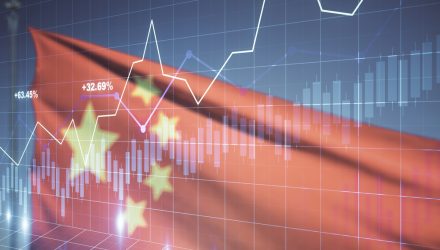By Natalia Gurushina, Chief Economist, Emerging Markets Fixed Income Strategy
China’s activity gauges slowed further in February, but this weakness is likely to be temporary. Activity gauges across EM showed a lot of divergence.
China’s activity gauges undershot expectations in February (see chart below), but there are good reasons to believe that the weakness is temporary. First, China’s manufacturing typically moderates during the Lunar New Year due to factory closures. But this year’s celebrations also coincided with the new COVID restrictions, exacerbating the seasonal pattern. Second, many high-frequency indicators (including energy production by six major power stations) already show improvements compared to January. Third, production and business expectations held on extremely well despite the second wave of the movement restrictions. Finally, the global trade is rebounding – as witnessed for example by increasing container supply from China – which is a welcome tailwind for China’s export PMIs.
The latest batch of Emerging Markets (EM) activity gauges (Purchasing Manager Indices, or PMIs) show a lot of divergence among major EM. A sharp increase in South Africa’s manufacturing PMI points to a stronger near-term growth outlook, sending – together with a more credible budget – an encouraging signal to the market. Other positive standouts include Poland, the Czech Republic, Brazil, and India – the manufacturing PMIs are well in expansion zone, which might add to the expectation of faster policy normalization in the first three countries. By contrast, negative PMI surprises in Indonesia, Malaysia, and Thailand might force local central banks to strike a more dovish tone.
The Turkish lira staged a major rebound this morning despite a weaker than expected Q4 GDP print. The moderating growth is in line with the slowing credit expansion, which in turn reflects several rate hikes from the central bank. A sharp decline in Turkey’s recent activity gauges signals that this trend will continue in Q1. The silver lining here is that softer – but structurally more sound – growth should pave the way for external adjustment and smaller current account deficits, helping to rebuild the international reserves and create a stronger fundamental backdrop for the lira.
Charts at a Glance: China Activity Gauges – Temporary Weakness

Source: Bloomberg LP
Originally published by VanEck, 3/1/21
IMPORTANT DEFINITIONS & DISCLOSURES
PMI – Purchasing Managers’ Index: economic indicators derived from monthly surveys of private sector companies; ISM – Institute for Supply Management PMI: ISM releases an index based on more than 400 purchasing and supply managers surveys; both in the manufacturing and non-manufacturing industries; CPI – Consumer Price Index: an index of the variation in prices paid by typical consumers for retail goods and other items; PPI – Producer Price Index: a family of indexes that measures the average change in selling prices received by domestic producers of goods and services over time; PCE inflation – Personal Consumption Expenditures Price Index: one measure of U.S. inflation, tracking the change in prices of goods and services purchased by consumers throughout the economy; MSCI – Morgan Stanley Capital International: an American provider of equity, fixed income, hedge fund stock market indexes, and equity portfolio analysis tools; VIX – CBOE Volatility Index: an index created by the Chicago Board Options Exchange (CBOE), which shows the market’s expectation of 30-day volatility. It is constructed using the implied volatilities on S&P 500 index options.; GBI-EM – JP Morgan’s Government Bond Index – Emerging Markets: comprehensive emerging market debt benchmarks that track local currency bonds issued by Emerging market governments.; EMBI – JP Morgan’s Emerging Market Bond Index: JP Morgan’s index of dollar-denominated sovereign bonds issued by a selection of emerging market countries; EMBIG – JP Morgan’s Emerging Market Bond Index Global: tracks total returns for traded external debt instruments in emerging markets.
The information presented does not involve the rendering of personalized investment, financial, legal, or tax advice. This is not an offer to buy or sell, or a solicitation of any offer to buy or sell any of the securities mentioned herein. Certain statements contained herein may constitute projections, forecasts and other forward looking statements, which do not reflect actual results. Certain information may be provided by third-party sources and, although believed to be reliable, it has not been independently verified and its accuracy or completeness cannot be guaranteed. Any opinions, projections, forecasts, and forward-looking statements presented herein are valid as the date of this communication and are subject to change.
Investing in international markets carries risks such as currency fluctuation, regulatory risks, economic and political instability. Emerging markets involve heightened risks related to the same factors as well as increased volatility, lower trading volume, and less liquidity. Emerging markets can have greater custodial and operational risks, and less developed legal and accounting systems than developed markets.
All investing is subject to risk, including the possible loss of the money you invest. As with any investment strategy, there is no guarantee that investment objectives will be met and investors may lose money. Diversification does not ensure a profit or protect against a loss in a declining market. Past performance is no guarantee of future performance.







